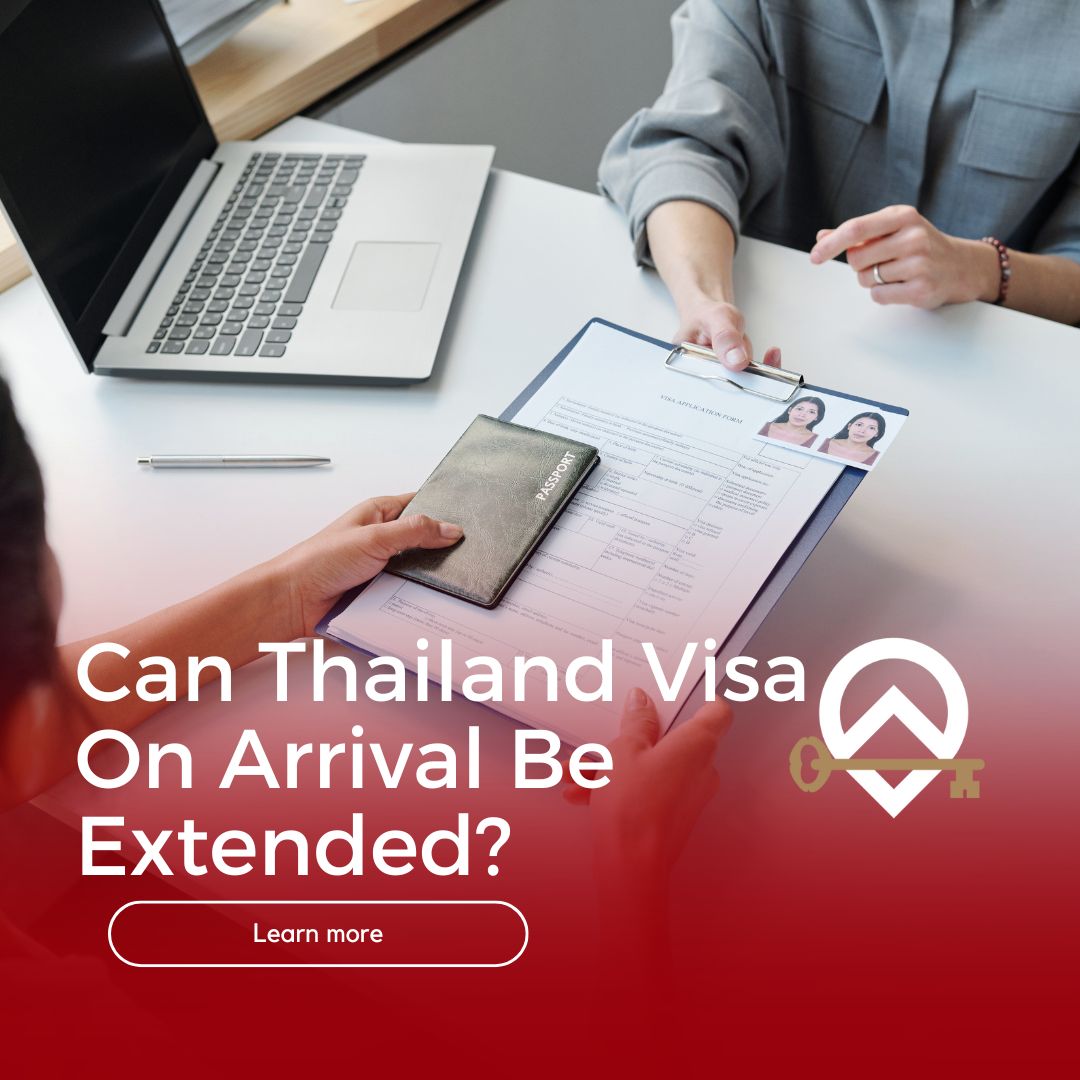Planning to stay longer in Thailand than your original visa on arrival allows? You're not alone! Many travelers find themselves wanting to extend their Thai adventure beyond the initial permitted period. The good news is that Thailand visa on arrival can indeed be extended, and the process is more straightforward than you might think. This comprehensive guide will walk you through everything you need to know about extending your stay in the Land of Smiles.
Table of Contents
- Understanding Visa On Arrival vs. Visa Exemption
- Extension Basics: What You Need to Know
- Step-by-Step Extension Application Process
- Required Documents and Fees
- Where to Apply and Immigration Office Hours
- Important Tips and Alternative Options
Understanding Visa On Arrival vs. Visa Exemption
Before diving into extensions, it's crucial to understand the difference between visa on arrival and visa exemption, as this affects your extension options. Many travelers confuse these two entry methods, but they have distinct rules and procedures.
Visa on arrival is specifically available to citizens of certain countries who must pay a fee upon arrival at Thai airports or border crossings. This typically grants a 15-day stay for tourism purposes. The countries eligible for visa on arrival include Andorra, Bulgaria, Bhutan, China, Cyprus, Ethiopia, Fiji, Georgia, India, Kazakhstan, Latvia, Lithuania, Maldives, Malta, Mauritius, Papua New Guinea, Romania, San Marino, Saudi Arabia, Taiwan, Ukraine, and Uzbekistan.
Visa exemption, on the other hand, is a free entry stamp given to citizens of many countries, including the United States, most European nations, Australia, and many others. Travelers can stay in Thailand for up to 60 days for tourism or short-term business purposes—an increase from the previous 30-day limit that was updated in 2024.
It's important to note that the extension rules and procedures are similar for both visa on arrival and visa exemption entries, but the initial stay duration differs. Understanding which category you fall under will help you plan your extension strategy more effectively.
Extension Basics: What You Need to Know
The extension process for Thailand visa on arrival follows the same general rules as other tourist visa extensions in Thailand. Here's what you need to know about the fundamentals:
Extension Duration
You can always apply for a 30-day extension at the immigration office where you are staying for 1,900 baht. This is a standard extension available to most tourist visa holders, including those who entered on visa on arrival. The 30-day extension is calculated from your current stamp's expiration date, not from the date you apply.
Extension Frequency
Generally, you can only extend your visa on arrival once during your stay. After the initial extension, you would need to exit Thailand and re-enter if you want to continue your stay legally. However, immigration policies can change, and officers have discretion in certain situations.
When to Apply
You can apply for an extension at any time during your current authorized stay, but it's recommended to apply at least a few days before your current stamp expires. Don't wait until the last minute, as processing may take a full day, and you don't want to risk overstaying your visa.
Cost and Payment
Extensions at Thai Immigration for the visa exemption stamps remain to be 30 days for a fee of 1,900 baht. This fee is standard across all immigration offices in Thailand and must be paid in Thai Baht cash. Credit cards are generally not accepted for visa extensions.
Step-by-Step Extension Application Process
Extending your visa on arrival involves a straightforward process that typically takes a few hours to complete. Here's how to navigate the application process successfully:
Step 1: Prepare Your Documents
Before heading to the immigration office, ensure you have all required documents ready. This includes your passport, completed application form, passport photos, proof of accommodation, and the extension fee. Having everything prepared in advance will make the process much smoother.
Step 2: Visit the Immigration Office
Go to the immigration office in the area where you're staying. You don't need to visit the same office where you entered Thailand; any immigration office can process your extension. Arrive early in the morning to avoid long queues, especially during peak tourist seasons.
Step 3: Submit Your Application
Present your documents to the immigration officer and pay the 1,900 baht fee. The officer will review your application and may ask questions about your travel plans or reason for extending your stay. Be honest and provide clear answers about your tourism activities.
Step 4: Wait for Processing
Extension processing usually takes 1-3 hours, depending on how busy the office is. You'll typically need to wait at the immigration office during this time. Some offices may give you a number and allow you to leave briefly, but this varies by location.
Step 5: Receive Your Extension
Once approved, you'll receive a new stamp in your passport showing the extended stay period. Double-check the dates on your new stamp to ensure they're correct before leaving the immigration office.
Common Questions During Processing
Immigration officers may ask about your travel plans, accommodation, financial means, and reason for extending your stay. Be prepared to explain your tourist activities and demonstrate that you have sufficient funds for your extended stay.
Required Documents and Fees
Having the correct documents ready is essential for a successful visa extension. Here's your complete checklist:
Essential Documents
Your passport with at least 6 months validity remaining and your current visa on arrival stamp is the most important requirement. You'll also need a completed TM.7 application form, which is available at the immigration office or can be downloaded online from the Thai Immigration Bureau website.
Two recent passport-sized photographs (4cm x 6cm) are required. These can be taken at photo shops near most immigration offices if you don't have them ready. The photos should show your face clearly against a white background.
Proof of Accommodation
You'll need to provide proof of where you're staying during your extended visit. This can be a hotel booking confirmation, rental agreement, or a letter from your host if staying with friends or family. Some offices may also require a TM.30 form, which your accommodation provider should file.
Financial Documentation
While not always requested, it's wise to bring proof of sufficient funds for your extended stay. This could include bank statements, cash, or traveler's checks. The general guideline is having access to approximately 10,000-20,000 baht per person for your extended stay.
Application Fee
The standard extension fee is 1,900 baht, payable in cash only. Make sure to bring exact change or small bills, as immigration offices may not have change for large denominations. This fee is non-refundable, even if your extension is denied.
Additional Considerations
Some immigration offices may request additional documents depending on your specific situation. It's always good to have copies of all your documents, as well as a pen for filling out forms. Dress appropriately and respectfully when visiting immigration offices.
Where to Apply and Immigration Office Hours
Thailand has immigration offices in major cities and tourist areas throughout the country. Knowing where to go and when they're open will help you plan your extension application effectively.
Major Immigration Offices
Bangkok has several immigration offices, with the main one located on Chaeng Wattana Road. This office handles most tourist visa extensions and operates with modern facilities. In Phuket, the immigration office is located in Phuket Town and serves the entire island.
Chiang Mai's immigration office is located near the airport and handles extensions for northern Thailand visitors. Pattaya has its own immigration office on Jomtien Beach Road, serving the eastern seaboard tourist areas.
Operating Hours
Most immigration offices operate Monday through Friday, typically from 8:30 AM to 4:30 PM, with a lunch break from 12:00 PM to 1:00 PM. However, some offices may have slightly different hours, so it's best to check specific office hours before visiting.
Best Times to Visit
Arrive early in the morning, ideally before 9:00 AM, to avoid long queues. Tuesday through Thursday are generally less busy than Mondays and Fridays. Avoid visiting during Thai holidays, as offices will be closed.
Special Considerations
Some popular tourist destinations have immigration offices that open on weekends or have extended hours during peak seasons. Always check the current operating schedule, as hours can change during holidays or due to special circumstances.
Important Tips and Alternative Options
Successfully extending your visa on arrival requires more than just following the basic procedures. Here are essential tips and alternative options to consider:
Planning Ahead
Don't wait until the last few days of your current stamp to apply for an extension. Immigration offices can be busy, and you don't want to risk overstaying your visa. Apply at least 3-7 days before your current stamp expires to allow for any unexpected delays.
Dress Code and Behavior
Dress conservatively and respectfully when visiting immigration offices. Avoid shorts, tank tops, flip-flops, or revealing clothing. Being polite and patient with immigration officers will make the process smoother for everyone involved.
Language Considerations
While many immigration officers speak basic English, having key phrases written in Thai or bringing a Thai-speaking friend can be helpful. Consider downloading a translation app on your phone as a backup.
Alternative Options
If you need to stay longer than the single 30-day extension allows, consider doing a "visa run" – exiting Thailand and re-entering for a new visa on arrival or exemption stamp. Popular destinations for visa runs include neighboring countries like Malaysia, Cambodia, or Laos.
For longer stays, you might want to consider applying for a proper tourist visa from a Thai consulate in a neighboring country, which can provide 60 days with the possibility of a 30-day extension, giving you up to 90 days total.
Important Updates for 2025
Starting May 1st, 2025, all foreign nationals entering Thailand by air, land, or sea must complete the Thailand Digital Arrival Card (TDAC) electronically three days before arrival. This new requirement will affect all future entries, including after visa runs.
What to Avoid
Never overstay your visa, as this can result in fines, detention, and future entry bans. Don't attempt to bribe immigration officers or use visa services that promise "guaranteed" extensions outside official channels. Always use official immigration offices for your extensions.
Record Keeping
Keep copies of all your visa documents, extension applications, and receipts. Take photos of your passport stamps as backup. This documentation can be helpful for future visa applications or if you encounter any issues during your stay.
Remember that visa policies can change, and immigration officers have discretion in their decisions. While extensions are generally granted for legitimate tourist purposes, having a clear travel plan and adequate funds will increase your chances of a successful extension. With proper preparation and the right documentation, extending your visa on arrival is a manageable process that allows you to enjoy more time exploring Thailand's incredible attractions and culture.


